Key takeaways
- Understanding GitHub Actions workflows enhances productivity by automating manual tasks like testing and deployment.
- Setting specific, measurable goals for workflow optimization helps track progress and align improvements with team needs.
- Implementing techniques like caching, parallelism, and breaking down jobs into focused steps significantly improves workflow efficiency.
- Regularly monitoring and testing workflow changes ensures stability and prevents unexpected failures, promoting continuous improvement.

Understanding GitHub Actions Workflows
Understanding GitHub Actions workflows can feel daunting at first, but once you grasp the basics, it becomes a powerful tool to automate your development process. I remember the moment it clicked for me: realizing that workflows are essentially a series of automated steps triggered by specific events in your repository. That realization sparked a whole new level of productivity in my projects.
Have you ever wondered how you could handle repetitive tasks like testing or deployment without manually executing commands? That’s exactly what workflows do—they chain together jobs and actions to run automatically in response to pushes, pull requests, or scheduled events. It’s like having a personal assistant for your code, working silently in the background.
One insight I’ve gained is that understanding the structure of a workflow file, written in YAML, is key. It defines triggers, jobs, and steps, and once you start reading these files, you begin to see patterns and possibilities. This clarity helped me optimize workflows to save time and reduce errors, something I wish I’d known when I started.
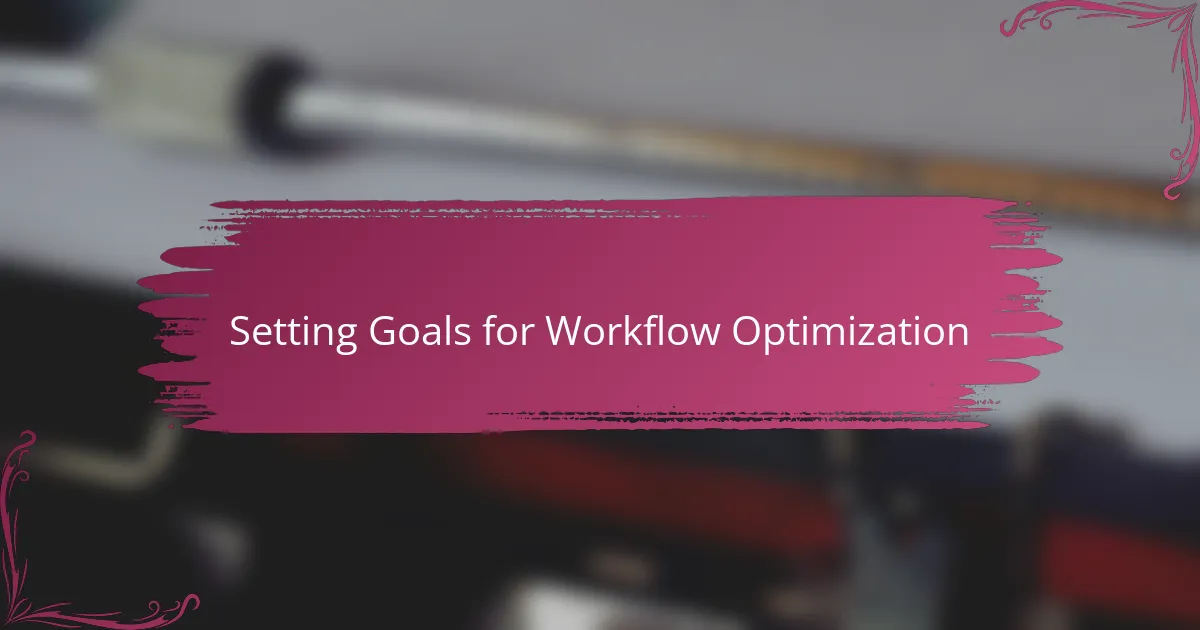
Setting Goals for Workflow Optimization
Setting clear goals for workflow optimization changed the way I approached automation. Without a target, I found myself tweaking settings aimlessly, which only led to frustration. Have you ever spent hours trying to make something faster, only to realize you never defined what “faster” meant? Defining specific objectives—like reducing build time or minimizing failed job runs—gave my work a real purpose.
I also learned that focusing on measurable outcomes helped keep the process grounded. For example, my initial goal was simply “make it better,” but that’s too vague to track progress. Instead, setting targets such as “cut deployment time by 30%” made it easier to evaluate improvements and stay motivated. This kind of goal-setting transformed a nebulous task into a clear challenge I could tackle step by step.
Another important insight is to align optimization goals with the team’s needs. I once optimized workflows that shaved seconds off CI runs but ignored feedback from my teammates about flaky tests. That disconnect meant my optimizations didn’t have the real impact we needed. So, I now make it a point to involve others in defining what “optimized” looks like—because workflow improvement should serve the whole team, not just one person’s preferences.
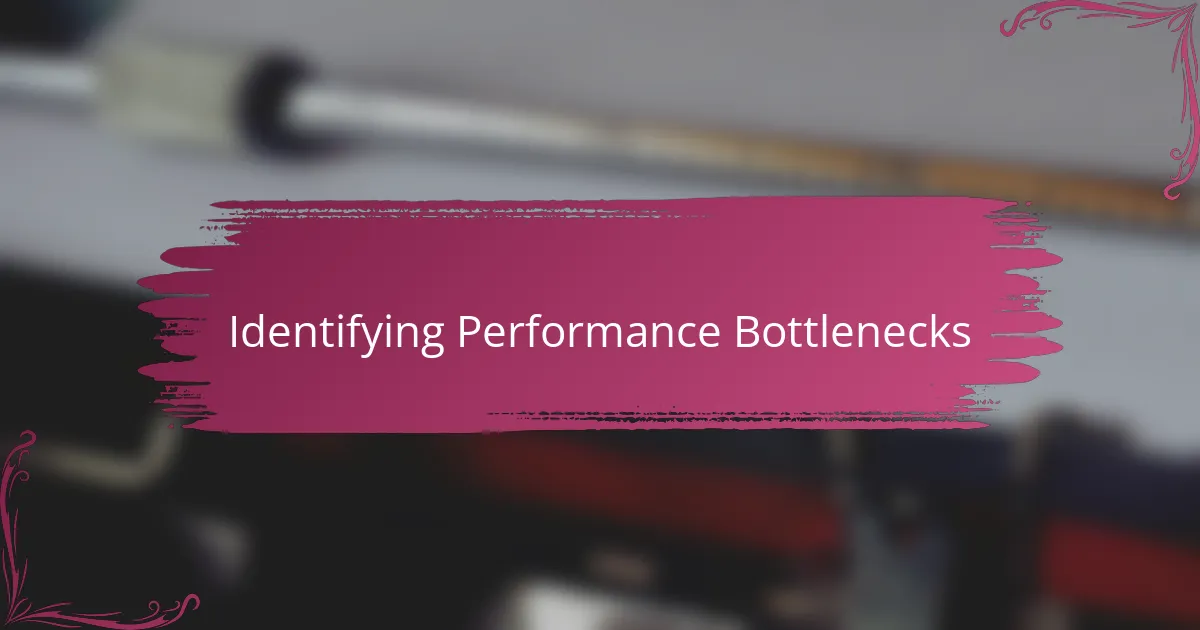
Identifying Performance Bottlenecks
Pinpointing where workflows slow down isn’t always obvious at first glance. I used to run entire pipelines blindly, guessing which step took forever—only to realize later that a single test was hogging all the time. Do you ever find yourself stuck waiting, wondering what’s causing the drag? That’s why I started breaking down logs and timings job by job, step by step.
One technique that helped me was enabling detailed logging and timestamps in GitHub Actions. Seeing exactly how long each action took opened my eyes. It felt like shining a flashlight into a dark room; suddenly, those hidden slow spots jumped out. Without this visibility, optimization felt like shooting in the dark.
I’ve also found that flaky or failing jobs can mask real performance issues. Early on, I overlooked that some tests kept restarting, inflating runtimes and misleading my analysis. Have you encountered that frustration? It taught me to isolate failures first, so my focus on performance wasn’t clouded by instability. Identifying these bottlenecks became a puzzle I actually enjoyed solving.
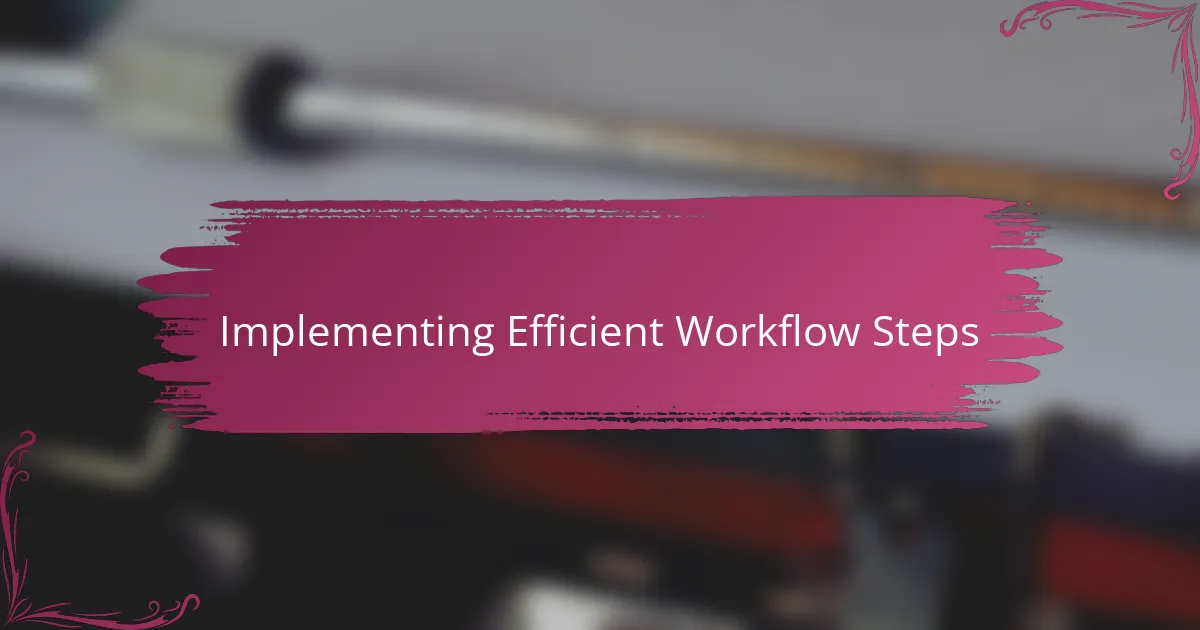
Implementing Efficient Workflow Steps
When I started refining my workflow steps, I realized that keeping each step focused and minimal made a huge difference. Have you ever piled many commands into one step, only to get lost when something breaks? Breaking tasks down into clear, atomic steps not only made debugging easier but also gave me better control over the process.
I also learned to reuse actions whenever possible instead of reinventing the wheel. Using well-maintained community actions saved me countless hours and reduced errors—I no longer had to write everything from scratch. This practice felt like having a toolbox filled with reliable gadgets, ready whenever I needed them.
At times, I experimented with conditional execution to skip unnecessary steps. Why run tests if nothing changed in the source code? Implementing these checks helped me avoid wasted time, and seeing the workflow skip irrelevant jobs gave me an odd sense of satisfaction—like trimming the fat to make the process lean and mean.
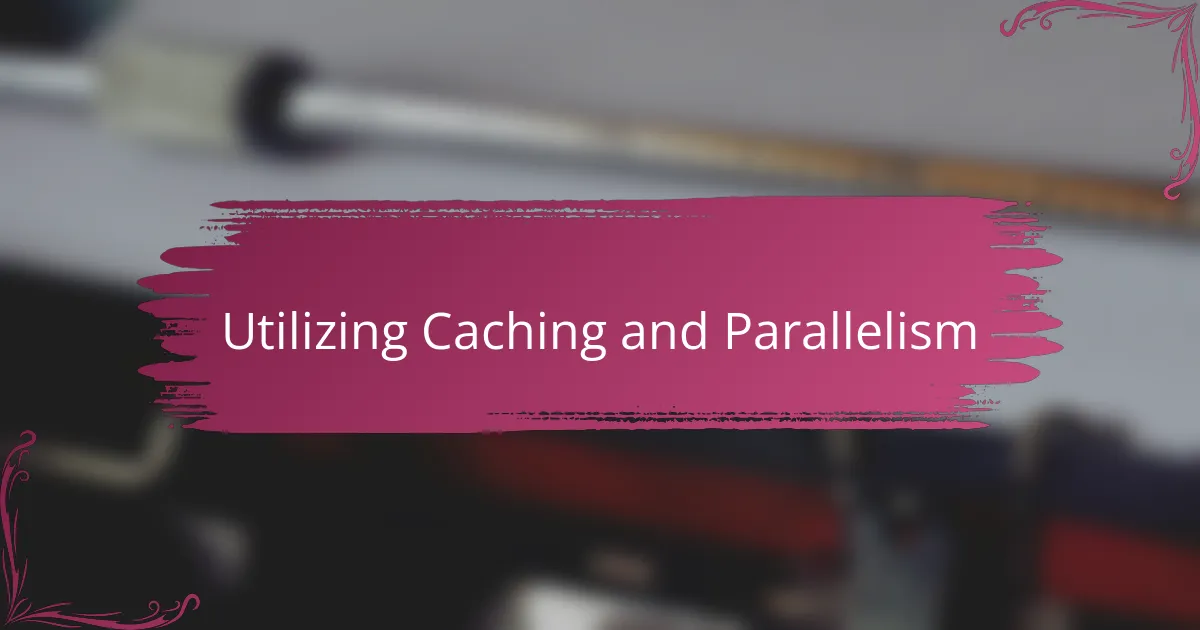
Utilizing Caching and Parallelism
Caching was a game-changer for me when optimizing workflows. I used to watch my builds choke on repeated dependency installations, which felt like running in place. By enabling caching for dependencies and build artifacts, I slashed those steps from minutes to seconds, freeing up time to focus on what really mattered.
Parallelism added another layer of speed that I hadn’t appreciated before. Instead of waiting for each job to finish one after another, I started running tests and builds concurrently. It’s like having multiple hands working on different tasks simultaneously—a simple concept, yet it transformed my workflow’s efficiency overnight.
Have you tried combining caching with parallel jobs? At first, I worried they’d conflict or complicate things, but with some tweaks, they worked beautifully together. The workflow not only ran faster but felt more reliable, making me wonder why I hadn’t embraced these strategies sooner.
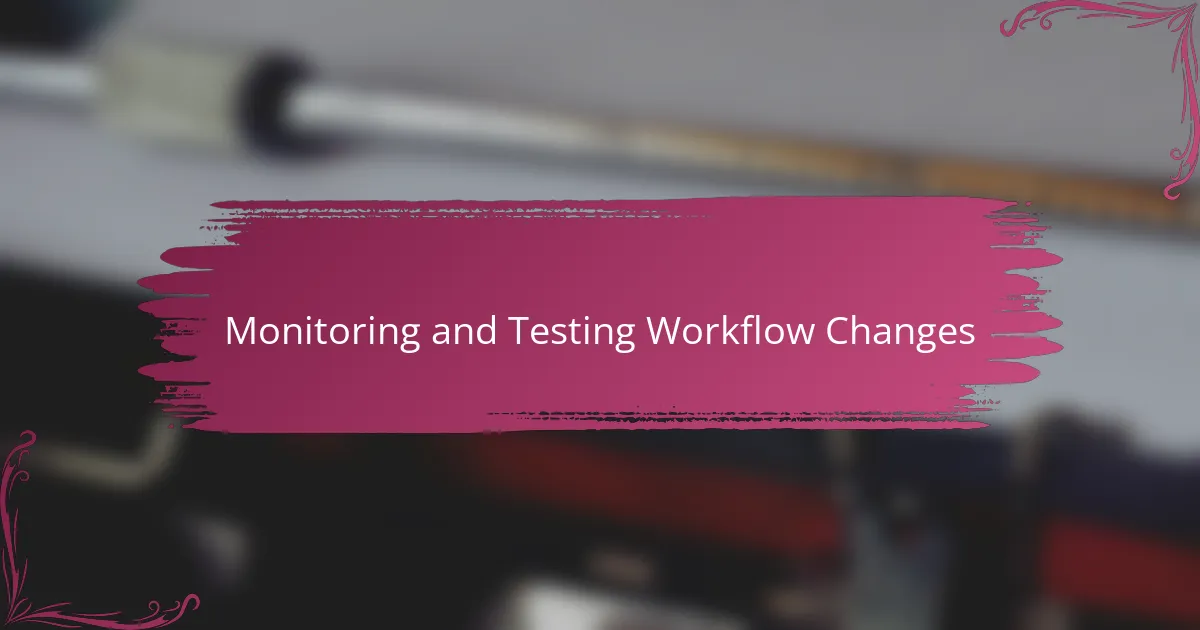
Monitoring and Testing Workflow Changes
Monitoring and testing changes in workflows became a part of my routine once I realized how easily a small tweak could unintentionally break the entire process. Have you ever pushed what seemed like a harmless update, only to watch your build fail hours later? Setting up notifications and regularly checking workflow run histories saved me from those frustrating surprises.
I also started writing dedicated test workflows to validate changes before merging them into the main pipeline. This practice gave me confidence, knowing that any modifications wouldn’t disrupt critical jobs. It felt like having a safety net, catching errors early instead of dealing with fallout after deployment.
Automating monitoring, such as using badges and detailed logs, helped me stay on top of workflow health without constant manual checks. I discovered that investing time in thorough tests upfront drastically reduced firefighting later—turning monitoring from a chore into a reliable feedback loop for continuous improvement.
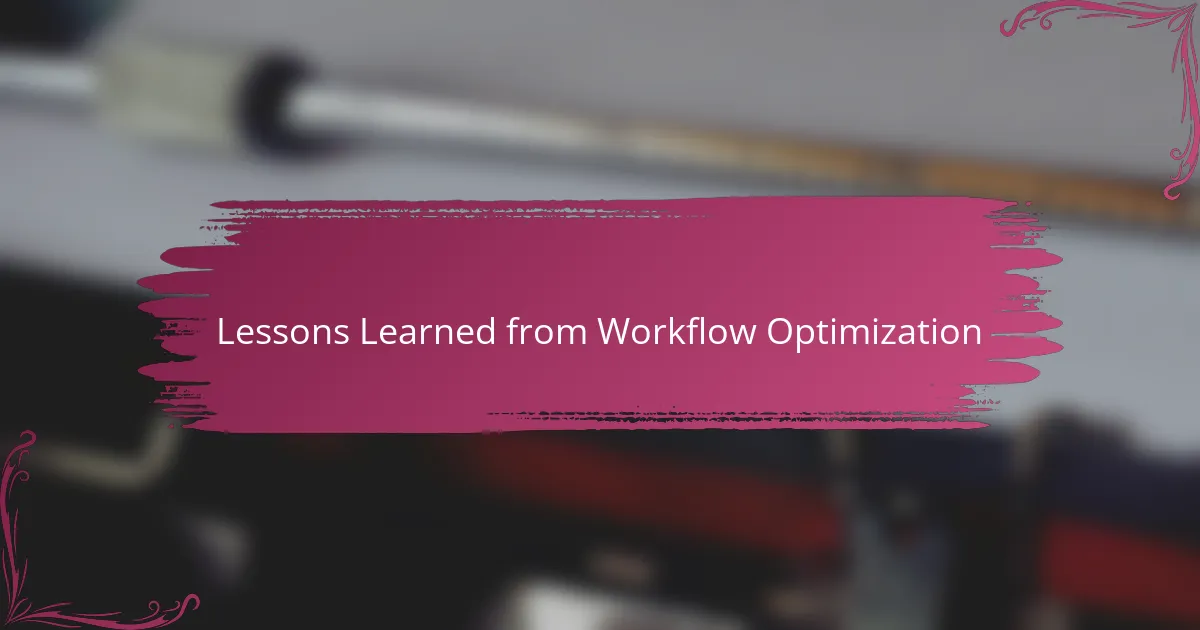
Lessons Learned from Workflow Optimization
One lesson that really stuck with me is how patience pays off in optimization. I used to rush through workflow tweaks, expecting instant improvements, only to end up with brittle processes that broke unpredictably. Have you ever felt that frustration when a “quick fix” causes more headaches? Taking time to analyze, test, and iterate slowly made my workflows both faster and more stable.
I also learned the value of feedback loops. Early on, I optimized based on my assumptions alone, which led to solutions that didn’t quite fit the team’s needs. When I started soliciting input regularly and reviewing workflow outcomes together, the results aligned better with real-world demands. It reminded me that optimization isn’t a solo sprint; it’s a team relay.
Lastly, embracing imperfection was eye-opening. Not every workflow will become lightning-fast overnight, and some trade-offs are inevitable. Instead of chasing perfection, I shifted my focus to consistent, incremental gains. Have you found that aiming for progress over perfection keeps motivation high? For me, this mindset made optimization an enjoyable journey rather than a frustrating chore.